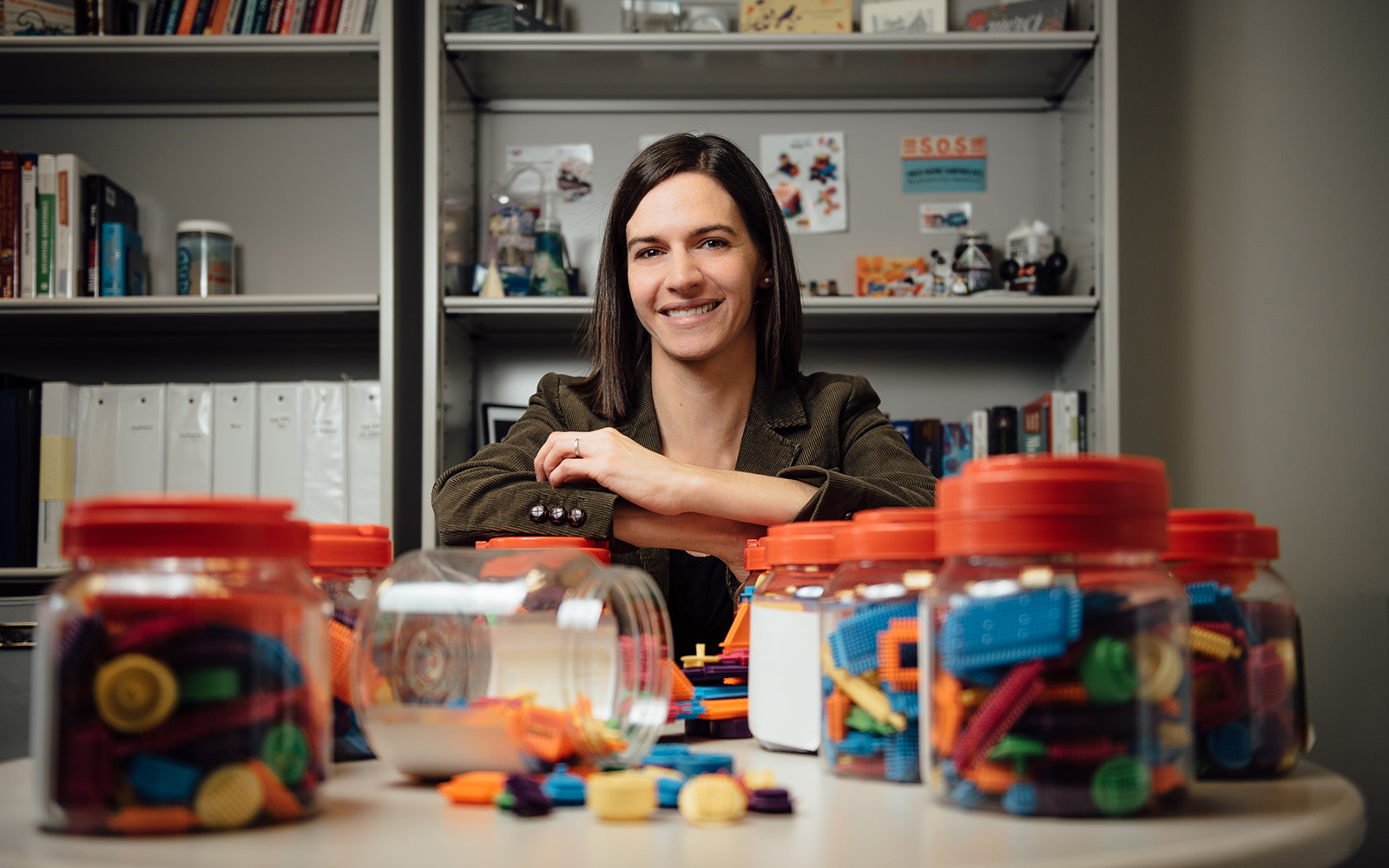
When Product Developers Invoke Emotion, Do They Generate More Creative Ideas?
What kind of potato chip would you create, and what would you name it, if you wanted to sell the product exclusively to pregnant women?
That was the task that UConn marketing professor Kelly Herd presented to more than 200 adults in a study about how emotion impacts creativity. Half of the group was simply given the assignment in an objective way. The other participants were told to take a few minutes to envision how the customer would feel while eating the snack, before beginning the task.
The amateur ‘product designers’ came up with vastly different potato chip ideas and descriptions, but the most creative (as judged by a panel of mothers-to-be) were: Pickles-and-Ice Cream chips; Sushi chips; and “Margarita-for-Mom” chips. The most creative ideas came from the group that had thought about how the consumer would feel before starting the task.
“I think it is fascinating to see that eliciting empathy has inherent value in maximizing creativity,” Herd said. “This is one of those areas of psychology that hasn’t been clearly disentangled yet for marketers: how does explicitly thinking of others’ feelings affect those who are creating new work?”
“We’ve shown that empathy can change the way in which you think,” Herd said. “We’ve looked at it in a somewhat narrow context of product design, but it appears that subtle things, such as imagining how someone else would feel, can have a huge impact on creativity in general.”
Several Experiments Yield Consistent Results
The ongoing research, with Ravi Mehta of the University of Illinois at Urbana-Champaign, includes several unique experiments across a variety of contexts. In the studies, they ask participants to design a child’s toy, select ingredients for a new kids’ cereal, and redesign a grocery cart for the elderly. Each time, the group that produced the most original products was the one instructed to imagine the target consumers’ feelings before beginning the task.
The product judges were experts in the subject area—for instance, the toys were judged by adults who work with children in the appropriate age group. None of the judges were aware of the differences in the team assignments, and were asked simply to use their knowledge to identify which designs were most creative.
The findings reconcile previous studies which produced inconclusive arguments on imagery and outcome.
Emotional Connection Leads to Cognitive Flexibility
The researchers believe the initial focus on others’ feelings creates ‘cognitive flexibility,’ which is the ability to simultaneously consider issues from diverse perspectives. The ability to “shift avenues of thought” while perceiving and processing information, is a benefit to creativity.
But it was important to determine that the proposals were not only creative, but feasible, Herd said. “We wanted to make sure the proposals weren’t outlandish and that empathy didn’t negatively impact practicality,” she said.
The recommendation of eliciting an emotion before beginning a creative project offers product developers an inexpensive and simple way to increase their idea generation, she said.
Companies Are Tapping Consumer Brainstormers
An interesting trend in marketing now is for large companies to develop new ideas for products and services from their customers’ suggestions, Herd said. LEGO, Starbucks, Frito-Lay Co., and even the U.S. Army offer opportunities for consumers to make recommendations for their corporate product line. This year alone, more than half of consumer-goods manufacturers say they will get 75 percent of their innovation and research and development capabilities from crowdsourcing.
Starbucks has fielded more than 150,000 customer ideas since it began implementing its crowdsourcing program in 2008. Their input has led to the creation of Frappuccino Happy Hour; mobile payment drive-thrus, free birthday treats, and the creation of cake pops.
In an ultra-competitive marketplace, few companies will survive for long without innovation and new products, Herd said. In fact, a 2016 study published in Business News Daily found that 82 percent of company executives interviewed believe there is a strong connection between creativity and business results.
Until now, mental imagery and other strategies impacting creativity haven’t been well researched, Herd said. The researchers were able to present new evidence demonstrating the effects of mental imagery on creativity, document the importance of different types of mental imagery, and identify cognitive flexibility as the underlying process.
“We were trying to brainstorm context where people could design for others,” she said. “Our participants spent a lot of time thinking these projects through, in some cases much more time than they needed to. One of the things we love about testing creativity is that it is engaging, and people say it is a fun task. Through these simple experiments, we’ve shown that consideration of an end-users’ feelings is a potent tool for developing innovative new products and solving problems that exist in the marketplace.”